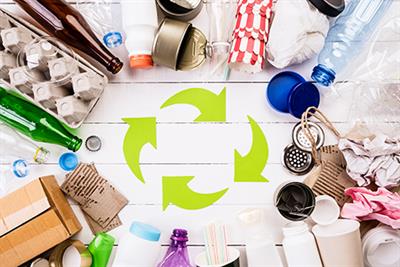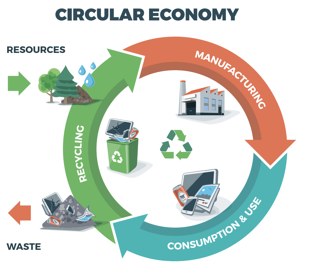 What is one thing online shopping and takeout food have in common? Packaging. The convenience of clothes, furniture or whatever your heart’s desire being delivered to your door comes with the cost of the protective layer wrapped around it. We have cast aside this foam peanut-filled cardboard or plastic time and time again — into the garbage bin it goes, to be forgotten while the long-awaited prize inside is revealed and gazed at. Gone are the days of the milkman when the package was valued — carefully emptied and returned to its original sender to be refilled again — or are they?
What is one thing online shopping and takeout food have in common? Packaging. The convenience of clothes, furniture or whatever your heart’s desire being delivered to your door comes with the cost of the protective layer wrapped around it. We have cast aside this foam peanut-filled cardboard or plastic time and time again — into the garbage bin it goes, to be forgotten while the long-awaited prize inside is revealed and gazed at. Gone are the days of the milkman when the package was valued — carefully emptied and returned to its original sender to be refilled again — or are they?
In 2015, packaging made up about 30% of all municipal solid waste in the U.S., which turned out to be 77.9 million tons in that year alone. Just over half (53%) of this was recycled. With China recently closing its doors to the world’s garbage and the lack of domestic recycling infrastructure, the percentage of recyclable material entering landfills, including packaging has increased.
So, how can we sustain the convenient processes of online shopping, takeout food and even packaged products on the shelves without overflowing our landfills or polluting Earth? By altering the way we do packaging from the ground-up.
1. Improve packaging design
A sustainable package should be sturdy so that it can meet performance standards and protect the product inside from damages. It should also be lightweight and the correct size for what it is holding without a lot of extra packaging. This decreases the transportation cost and reduces unnecessary waste.
2. Clean production
Utilize best practices and clean technology to reduce water use, recycle water, reduce emissions, reduce energy usage, utilize renewable energy, and reduce scrap material and misprints.
3. Reuse or recycle or both
 The structure in which to go about using materials more than once depends on how consumers behave and the capabilities of infrastructure.
The structure in which to go about using materials more than once depends on how consumers behave and the capabilities of infrastructure.
- Utilizing a long-lasting material such as rubber, certain plastics, metal or glass would help to reuse the same package multiple times. This is contingent on the consumer returning it or the sender picking it up after use.
- Utilizing easily recyclable materials helps to break down packaging and reconstruct them or use them in other products. This is contingent on the waste management system excel in sorting and effectively recycling materials. Some types of glass and metal can be both long lasting and easily recyclable.
4. Whichever package type you choose, utilize recycled materials and reduce waste
This change won’t happen unless support comes from the top-up and bottom-down. Do your part by buying recycled materials from recycling plants, utilizing your own waste, and making partnerships with other companies to utilize each other’s waste materials the other cannot use.
Putting these solutions into action has many benefits, but ultimately lessens the impacts of natural resource exploitation. This includes damages to the environment, people living around that environment, and workers contributing to mining, deforestation, oil drilling, etc.
Read more about these tips and how two organizations, Association of Plastic Recyclers (APR) and Printpack, are putting them in action!